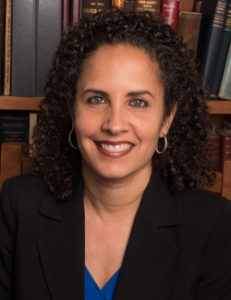Yearly Archives: 2018
Dec 10, 2018 Kristin HickmanTax Law
Clint Wallace,
Congressional Control of Tax Rulemaking, 71
Tax L. Rev. 179 (2017), available at
SSRN.
In its 2011 decision in Mayo Foundation for Medical Education and Research v. United States, the Supreme Court held that most if not all general authority Treasury regulations carry the force of law and, thus, are eligible for judicial review and deference under the Chevron standard. In reaching that conclusion, the Court reiterated its general presumption in favor of “maintaining a uniform approach to judicial review of administrative action” and, correspondingly, rejected “an approach to administrative review good for tax law only.” But the Court qualified that presumption at least a bit—noting the taxpayer’s failure to “advance[] any justification for applying a less deferential standard of review to Treasury Department regulations,” and thereby suggesting that good reasons for tax exceptionalism might exist on another occasion. With Congressional Control of Tax Rulemaking, Clint Wallace advocates at least some amount of tax exceptionalism in judicial review of Treasury/IRS regulatory interpretations of the Internal Revenue Code. Or does he?
In the wake of Mayo, scholars writing about tax administration have divided loosely into exceptionalist and anti-exceptionalist camps. The exceptionalists may not reject Mayo’s particular holding, but they otherwise prefer the pre-Mayo status quo and seek to justify tax exceptionalism from one or many administrative law requirements, doctrines, or norms. The anti-exceptionalists see independent value in bringing tax administration more into line with general administrative law, so they would impose a higher bar—e.g., an affirmative statement of congressional intent—before permitting tax exceptionalism. Obviously, this characterization is over-generalized, as it is more accurate to portray exceptionalism and anti-exceptionalism as two ends of a continuum rather than a pure binary choice. Still, much scholarship in this area adopts a tone and reflects assumptions and preferences that clearly lean one way or the other. And yet, although Wallace’s article advances an exceptionalist argument, to the eye of this anti-exceptionalist writer, his reasoning and analysis suggest that the two camps may not be so far apart after all—at least not with respect to statutory interpretation. Continue reading "Bridging Exceptionalism and Anti-Exceptionalism with the JCT Canon"
Dec 7, 2018 Steve GoldLexEnvironmental Law
“For ‘tis the sport to have the engineer / Hoist with his own petard.”
William Shakespeare, Hamlet, Act III Scene iv.
Happy is the litigator who successfully turns an argument against the adversary who propounded it. The joy is no less delicious for an academic. Professor Sanne Knudsen tries to turn the trick against the conservative majority of the current Supreme Court in her tidy article, The Flip Side of Michigan v. EPA: Are Cumulative Impacts Centrally Relevant?
Knudsen has gone to war against the narrow, atomistic thinking that, in times of both regulatory advance and retrenchment, has characterized much of environmental policy. Flip Side seeks to infiltrate comprehensive analysis across a broad front of agency decision-making, strengthening environmental regulation under cover of a court decision that struck down a major pollution-control rule.
Flip Side begins by analyzing the Michigan v. EPA opinion, in which the Supreme Court, per Justice Scalia, ruled 5-4 that the Clean Air Act requires EPA to consider industry’s costs of compliance when deciding whether it is “appropriate and necessary” to regulate mercury emissions from power plants. Knudsen avoids, or rather just dips a toe into, several scholarly debates the opinion generated. Did EPA lose at Chevron step one, because the statutory term “appropriate” unambiguously includes cost considerations, or at Chevron step two, because it is unreasonable to exclude cost considerations when construing ambiguous statutory language? How strongly did the Court endorse cost-benefit analysis as a mandatory component of environmental regulation? How broadly will the mandate to consider costs be applied in other statutory contexts? Continue reading "Better Environmental Law from an Unlikely Source"
Dec 6, 2018 Melissa MortazaviLegal Profession
Bruce Green and Rebecca Roiphe,
Can the President Control the Department of Justice?, ___
Ala. L. Rev. ___ (forthcoming), available at
SSRN.
One need look no further than Donald Trump’s tweets berating the Attorney General and Deputy Attorney General to view the pronounced tension between the oval office and the Department of Justice (“DOJ”). Not merely hypothetical or academic for this generation of scholars, the topic of executive power and its parameters has been thrust into the limelight. However, scholarly interest in executive power, usually stoked by fraught historical moments (Watergate, the Lewinsky affair, post-9/11 torture memos, and now the Russia investigations), rarely focuses on history itself. Much of the existing and growing body of work in the legal academy examines presidential power in constitutional and administrative terms. However, the question posed by this article, “Can the President Control the Department of Justice?” lives in a textualist’s wasteland bereft of guidance from these usual suspects. Neither the Constitution nor leg-reg provides an answer—instead, both are conspicuously silent.
Enter Green and Roiphe. Where others find a void, their article finds meaning in Congressional silence as it traces the power of professional institutional norms built incrementally over time. Starting with the originalist rationale for executive control over government lawyers, to the emergence of today’s federal bar and administrative state, Roiphe and Green craft a vivid picture of the modern legal profession generally, and prosecutors specifically. Drawing on historical sources ranging from public confirmation hearings and opinions to personal letters, this narrative reveals federal prosecutors to be a doggedly independent group, providing a check on partisan politics through professional commitments to rule of law and bureaucratic neutrality. As such, “prosecutors may not accept direction from the President but must make the ultimate decision about how to conduct individual investigations and prosecutions, even at risk of being fired for disobeying.” (P. 64.) In their telling, the modern prosecutor knows that politically motivated action is illegitimate, and therefore, in some cases, resignation is preferable to capitulation. Resignation leaves intact a culture of commitment to rule of law, bureaucratic neutrality, and independence. Continue reading "Professional Responsibility as a Limitation on Executive Power"
Dec 5, 2018 Suzette M. MalveauxCourts Law
Alan M. Trammell,
Demystifying Nationwide Injunctions (Nov. 26, 2018), available at
SSRN.
One of the hottest topics on the current legal landscape is the propriety of national injunctions. Federal district court judges are increasingly enjoining the federal government from enforcing statutes, regulations or policies nationwide—fashioning remedies far beyond the parties and the court’s geographic purview. While this practice initially took hold in the 1960s, it escalated during the Obama Administration and has intensified under the Trump Administration.
For example, a district judge in Texas barred enforcement of Obama’s Deferred Action for Parents of Americans and Lawful Permanent Residents (DAPA)—applying the bar not only to the twenty-six states who complained, but to the entire nation. Similarly, a district judge in Hawaii barred enforcement of Trump’s travel ban, which excluded travelers from seven countries—most predominantly Muslim—on alleged religious discrimination grounds; the court forbid the Administration from applying the ban not only to the parties in the case, but to non-parties across the country.
This has led many people to ask themselves, “Hey, wait a minute! Can they do that?” They are not alone. The recent uptick in judgments rebuking executive action and issuing sweeping reforms at the hand of singular judges has invigorated a robust debate over the propriety of this practice in particular and the power of federal judges in general. Just recently, former Attorney General Jeff Sessions expressed skepticism over the legitimacy of national injunctions, joining Justice Clarence Thomas’s assessment of them, in Trump v. Hawaii, as “legally and historically dubious.” A number of scholars have expressed similar doubt and concerns. Continue reading "Preclusion Law as a Model for National Injunctions"
Dec 4, 2018 Shelby D. GreenProperty
Money can’t buy happiness, so the saying goes. But, does giving away property bring happiness? That is the proposition considered by Professor Dave Fagundes, in his new article Why Less Property is More: Inclusion, Dispossession, & Subjective Well-Being.
Professor Fagundes urges new thinking on the classic conception of property, moving away from possession and exclusion, long the centers of the construct, toward their more obscured counterparts, dispossession and inclusion. Starting with the notion that property historically has been justified for its utilitarian ends, he suggests that if we are not better off when we amass property and exclude, then a different conception of the rights inhering in property might better achieve these ends. Continue reading "Giving and Including for Happiness"
Dec 3, 2018 Sam KraussJurisprudence
In the mid-aughts, philosophers began to seriously consider the following question: how should you revise a belief, if at all, upon learning that you disagree with someone you trust? This has come to be known as the problem of peer disagreement. It’s a vexing problem. In the face of disagreement, our inclination is to remain confident. Yet, it is difficult to say why we should: if you think your friend is equally smart, and she reviewed the same information, what reason do you have to think that, in this particular case, you’re right and she’s wrong? On the other hand, if we should become much less confident, this seems, as philosopher Adam Elga puts it, rather spineless. And, while disagreement may prompt you to recheck your math on a split bill, it’s unlikely you’d rethink the morality of abortion. What, if anything, about the cases licenses distinct treatment?
Philosophers have proposed various responses. But, until recently, a search for “peer disagreement” in the legal literature would have yielded few results. Thankfully, a slew of articles has remedied this. Alex Stein writes on tribunals whose members come to the same conclusion, but for different reasons, and, separately, about post-conviction relief in light of conflicting expert testimony. Youngjae Lee writes about disagreement and the standard of proof in criminal trials. And, although they do not explicitly engage with the philosophical literature, Eric Posner and Adrian Vermeule discuss how judges on multimember courts ought to take into account the votes of their colleagues. William Baude and Ryan Doerfler’s article, in part a response to Posner and Vermeule, is required reading for anyone interested in disagreement and adjudication. Baude and Doerfler discuss what judges should do when they find out that other judges, or academics, disagree with them about a case. They land upon a moderate conciliationist position: become less confident when the disagreeing party is a “methodological friend,” and not otherwise. Continue reading "Disagreement and Adjudication"
Nov 30, 2018 Margaret KwokaAdministrative Law
Rory Van Loo,
Regulatory Monitors, __
Colum. L. Rev. __ (forthcoming 2019), available at
SSRN.
One basic tension in administrative law is the combination in one entity of the various functions in government otherwise thought better divided: making laws, prosecuting suspected violations of those laws, and adjudicating whether the violations occurred. This mixed-function design leads to heightened concerns about accountability and oversight of agencies’ exercise of delegated authority. Various administrative law responses to these concerns are familiar. For example, for formal agency proceedings, Congress limited agency personnel communications and conflicts in the Administrative Procedure Act (APA) so as to ensure the “separation of functions” within an agency. More generally, public participation, transparency, and judicial review are mechanisms thought to constrain agencies from overreach.
But in his forthcoming article, Regulatory Monitors, Professor Rory Van Loo paints a striking picture of an underexamined group of agency actors who can de facto exercise all three kinds of agency power all while largely being exempted from APA constraints. His account of these regulatory monitors is made all the more fascinating by the methodology of his research, which captured the results of agency data, examination of public records, and interviews across nineteen large regulatory agencies. This sort of on-the-ground, trans-substantive look at the work agencies actually do is an exciting trend in administrative law scholarship (and one that I myself have found fruitful in examining how businesses and individuals seeking records about themselves invoke agency FOIA processes). This example is no exception: Van Loo’s account of regulatory monitors is powerful precisely because it complicates our understanding of agency power and suggests accountability gaps worth further exploration. Continue reading "The Power of the Watchful Eye"
Nov 29, 2018 Carl ColemanHealth Law
Over the past decade, the emergence of CRISPR-Cas-9 as a means to “edit” the human genome has brought human genetic modification out of the realm of science fiction and into the real world. This revolutionary technology enables users to “make specific and efficient modifications to a genome” through a process that is “simple, inexpensive, and remarkable effective.” A variety of efforts are now underway to harness this technology to treat inherited diseases and cancers. Most scientists and bioethicists, however, have collectively shuddered at the possibility of using CRISPR-Cas-9 to make germline genetic modifications—i.e., changes in sperm, eggs, or early embryos that would passed on to future generations. Groups ranging from UNESCO to the National Academies of Sciences, Engineering and Medicine have called for extreme caution in proceeding with research on human germline editing, and for a complete moratorium on clinical applications of the technology pending further public deliberation.
In a provocative analysis, Beyond Nature? Genomic Modification and the Future of Humanity, Julia Mahoney and Gil Siegal challenge this “go-slow” approach on both theoretical and practical grounds. They argue that the chief arguments for extreme caution—the interests of future generations, safety considerations, equality concerns, the “evils of eugenics,” and the importance of public trust in science—not only fail to withstand rigorous analysis, but in fact “militate instead for advancing with all deliberate speed.” (P. 196.) In addition, they warn that efforts to limit human germline modification are unlikely to be effective; instead, they will simply “drive cutting edge work into the shadows,” (P. 197) thereby “decreasing public transparency and accountability by moving activity out of sight of democratically responsive entities” (P. 213). Continue reading "Questioning the Go-Slow Approach to Human Germline Modification"
Nov 28, 2018 Laura A. HeymannIntellectual Property Law
A photograph taken by Walker Evans is worth more—both in the market and in the eyes of critics—than a virtually identical photograph taken by an unknown artist, just as a handbag bearing the name Prada is worth more—both in the market and in the eyes of those who place social value on such goods—than a work of similar craftsmanship by an unknown manufacturer. In both cases, audiences are potentially responding to a number of factors: aesthetics, critical reception, reputational value, and the status conferred by scarcity.
Part of what enables audiences to evaluate these factors is a belief that the object has the genealogy it purports to have. We term this information state “authenticity,” a characterization that is capacious enough to embrace a number of modes of production. An authentic Warhol might have involved the work of several assistants, all making visible the concept formerly existing only in Warhol’s mind; an authentic designer bag might involve a certain amount of outsourcing to overseas fabricators. A Sol LeWitt wall is the physical manifestation of a two-part work: the directions to accomplish LeWitt’s conception in each new space and a certificate of authenticity. The certificate of authenticity is key to the work’s existence; without it, as a lawsuit once claimed, the work essentially ceases to exist. Authenticity can even, in some instances, certify falseness, as when the U.S. Postal Inspection Service seized and then auctioned off 12,000 fake Salvador Dali works in 1995. When asked why a buyer would pay $4,000 for a known fake, the curator of the Salvador Dali Museum mused that the notoriety that the works had garnered as “authorized fake Dalis” upped the price buyers were willing to pay.
Given the role that authenticity plays in the art market in particular, Amy Adler contends that copyright law is beside the point. Continue reading "Copyright and the Single Work"
Nov 27, 2018 Nancy LeongEquality
The notion of property enshrined in the American legal system is a poor fit for what scholars have termed cultural property—tangible and intangible items of great importance to tribal cultural heritage. As Chante Westmoreland deftly reveals in her Note, An Analysis of the Lack of Protection for Intangible Tribal Cultural Property in the Digital Age, property law addresses only some of the concerns associated with cultural items of significance to tribes. Property law is designed to protect the object itself, but tribes are often concerned not only with an actual object, but also with the cultural and spiritual significance of the item. (In order to track Westmoreland’s own language, I will use the word “tribe” or “tribal” to refer to people indigenous to what is now the United States. Other scholars might use the words indigenous, Native American, Indian, or their variants. The choice of language is a vital conversation, but one I will not take up in this short review.)
Of particular importance today—when it sometimes seems that everyone wants to make everything available on the Internet—are the new problems associated with digitization of important tribal artifacts. Westmoreland offers a balanced account of the benefits and problems associated with digitization. On the one hand, digitization enables what some have called a “museum without walls”—an opportunity for anyone with an Internet connection to learn about tribal practices around the world. Such a virtual museum would benefit scholarly research and enhance understanding by laypeople. Moreover, digitization would help mitigate the risk of loss of irreplaceable cultural items in a natural disaster or a war. The recent fire at Brazil’s National Museum, which caused the tragic loss of many irreplaceable items, vividly illustrates the benefits of digitization. One researcher, a member of the Tenetehára-Guajajara tribe who had been studying his people’s heritage, offered a stark assessment: “It felt like a genocide.” Continue reading "Protecting the Intangible"















